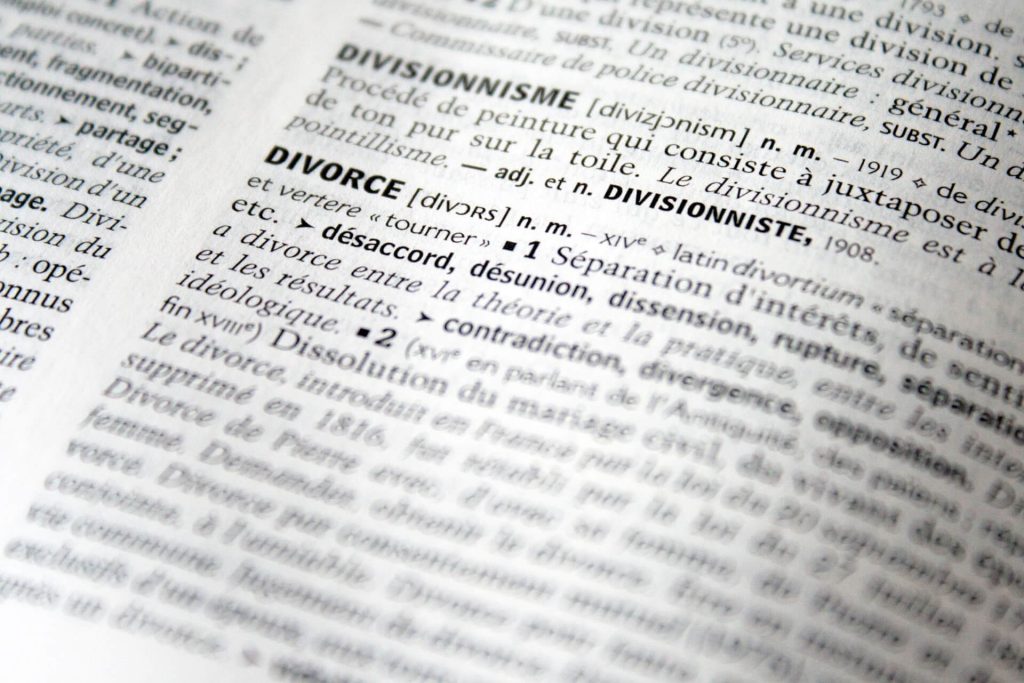Magazine
Do You Thrive To Learn More About How To Achieve Greater Business Success?
Sign up to our magazine designed specifically for Australian business leaders.
You are here: Home » Blog » Accounting » Saving Tax on Divorce

Published on 12 February 2018
by Mike Beer
Categories: Accounting, Wealth
Divorce, as we know, is unfortunately all too common.
It’s a stressful time with emotions running high, which in turn can lead to significant legal and accounting fees being incurred haggling over the division of assets.
I have become recently involved in a divorce matter, whereby it has been dragging on now for over four years.
The legal and accounting fees that have been incurred to date must be in excess of at least $500,000. A ridiculous amount of money being wasted, which could perhaps have been otherwise spent on their children’s education, or even house deposits for their children in the future.
To add insult to injury there can be a sting in the tail in regards to additional tax liabilities being incurred on paying out a former spouse’s financial settlement entitlements.
For example, if the money is withdrawn from a private company to payout a spouse, the Division 7A loans to shareholders and associate rules of the Tax Act still need to be complied with in order that such amounts are not deemed to be assessable unfranked dividends being paid to the recipient.
Over my time in public accounting I have seen many clients set up in inappropriate/inefficient tax structures by their previous advisors.
A case in point is the divorce matter I mentioned above, whereby the husband personally owns not only 100% of the company that operates the main business, but also personally owns all of the shares in the service company that employs the employees that are “hired” to the main business entity.
Not a family trust in sight to facilitate the tax-effective splitting of income, even though the wife was a stay-at-home mum earning very minimal taxable income.
Despite this inefficient tax structure, thankfully by making the two companies a party to the financial separation agreement Consent Orders, monies payable to the wife from the companies can be structured as fully franked dividend assessable to her, even though she is not a shareholder, under Section 109C of the Tax Act.
That is, although as part of the Consent Orders, the husband has agreed to pay any additional tax liability arising on such assessable dividends paid to the wife, he is still well ahead, as he is effectively utilising his wife’s marginal tax rate thresholds. This is as opposed to himself being assessed at the top marginal tax rate, currently being 47%, on any dividend payments necessary to be declared to him to pay out the settlement monies owed to his former wife.
There are a number of other ways to save tax on divorce, including the following:
Children below the age of 18 are only able receive passive income (eg. interest, dividend, trust income etc) of $416 tax-free before they virtually have to pay the top marginal tax rate on any excess. However, if such children receive a trust distribution from a Child Maintenance Trust, they are assessed at adult marginal tax rates on the same, meaning the first $18,200 is tax-free and so forth.
With correct structuring, a refund of franking credits can often result by the use of Child Maintenance Trusts.
Obviously the facts of each situation are different, but it is important to gain the correct advice and have the required documentation in place.
Above all, when going through a divorce/spousal financial separation, as much as it is difficult, try and put the emotion aside and work together in arriving at a financial settlement that is fair and reasonable to both parties.
There is always the tendency to want more. Just bear in mind though, that if there are children involved, what you may perceive yourself to have “missed out upon” may ultimately end up with the children anyway, via a greater inheritance to them from your former spouse.
Perhaps an overly simplistic view I know, but sure beats the thought of wasting a significant amount of money on professional fees if no agreement is able to be reached.
Do You Thrive To Learn More About How To Achieve Greater Business Success?
Sign up to our magazine designed specifically for Australian business leaders.